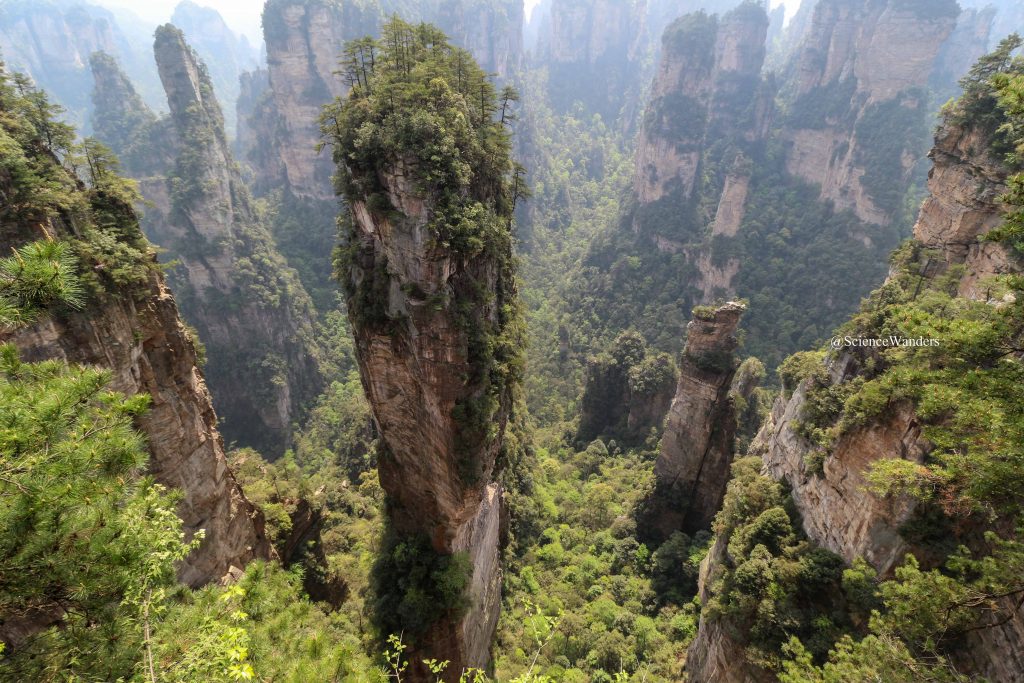
How Did Zhangjiajie Form?
Zhangjiajie National Forest Park is famous for its towering sandstone pillars, a unique and breathtaking landscape that draws visitors from around the globe. But how did these magnificent formations come to be? The answer lies in a fascinating geological history spanning hundreds of millions of years.
From Sea Trough to Sandstone: A Geological Journey
Around 1.5 billion years ago, the land now home to Zhangjiajie underwent a dramatic transformation. Powerful tectonic forces caused the Earth's crust to shift, creating a massive depression that filled with seawater. This sea trough became the birthplace of Zhangjiajie's iconic sandstone peaks.
Volcanic Activity and Quartz Formation
Underneath the surface of this ancient sea, volcanoes rumbled and erupted. Lava, spewing from these underwater fissures, played a crucial role in forming the sandstone. Within the molten rock, silica, a common mineral, crystallized into quartz. This quartz would become the resilient "eggs" within Zhangjiajie's sandstone matrix.
Sedimentation and the Birth of Sandstone
Over eons, rivers carried massive amounts of sand, pebbles, and other sediment into the sea trough. These layers of sediment, interspersed with volcanic ash and the quartz-rich remains of lava flows, slowly settled on the seafloor. Over millions of years, the sheer weight of these layers compressed the sediment, a process known as lithification. The quartz crystals, acting as a binding agent, cemented the sand and sediment together, solidifying the mixture into a new type of rock: quartz sandstone.
Uplift and Erosion: Sculpting a Landscape
While the formation of sandstone provided the raw material, it was the combined forces of uplift and erosion that sculpted Zhangjiajie's dramatic landscape.
The Rise of the Peaks
Around 80 million years ago, the same tectonic forces that created the sea trough went into reverse. The landmass began to rise, slowly pushing the sandstone formations upwards from the seabed. This uplift, a gradual process continuing to this day, is what gives the Zhangjiajie peaks their impressive height.
Nature's Chisel: Erosion's Role
Once exposed to the elements, the sandstone became subject to the unrelenting forces of erosion. Wind, rain, and ice worked in concert, carving away at the softer layers of rock. This process, known as differential weathering, preferentially eroded the weaker layers, leaving behind the more resistant quartz-rich sandstone to form towering pillars, deep ravines, and intricate natural sculptures.
The Impact of Climate
Zhangjiajie's humid subtropical climate, characterized by warm temperatures and abundant rainfall, has significantly influenced the rate and pattern of erosion.
Chemical Weathering
The high humidity and rainfall accelerate chemical weathering processes. Rainwater, slightly acidic due to dissolved carbon dioxide, reacts with minerals in the sandstone, weakening the rock structure and making it more susceptible to erosion.
Physical Weathering
The region's warm temperatures and abundant rainfall also contribute to physical weathering. The expansion and contraction of water freezing and thawing in cracks and crevices further break down the sandstone, contributing to the formation of the park's dramatic pinnacles and canyons.
A Timeline of Zhangjiajie's Formation
To better visualize the vast timescales involved, here’s a simplified timeline of Zhangjiajie's geological history:
| Era | Period | Million Years Ago | Event |
|---|---|---|---|
| Precambrian | Proterozoic | 1500 | Tectonic activity forms a sea trough. |
| Proterozoic | 1500 - 541 | Underwater volcanoes erupt, depositing quartz-rich lava. | |
| Paleozoic | 541-252 | Rivers deposit layers of sediment in the trough. | |
| Mesozoic | Triassic - Jurassic | 252-145 | Sediment compresses and solidifies into quartz sandstone. |
| Cretaceous | 145-66 | Tectonic uplift begins, gradually raising the sandstone. | |
| Cenozoic | 66-Present | Erosion shapes the sandstone into pillars, ravines, and other formations. |
FAQs
1. Are the sandstone pillars still changing?
Yes, the forces of erosion are ongoing, albeit very slowly. The pillars continue to be shaped and sculpted by wind, rain, and other natural forces, ensuring that the landscape of Zhangjiajie remains in a constant state of flux.
2. What makes the quartz sandstone in Zhangjiajie so unique?
The presence of quartz crystals within the sandstone is crucial. These crystals act as a strong binding agent, making the sandstone more resistant to erosion compared to other types of sandstone.
3. How has the climate of Zhangjiajie influenced its formation?
The warm, humid climate accelerates both chemical and physical weathering processes. The abundant rainfall contributes to the breakdown of the sandstone, while the warm temperatures allow for freeze-thaw cycles that further erode the rock.